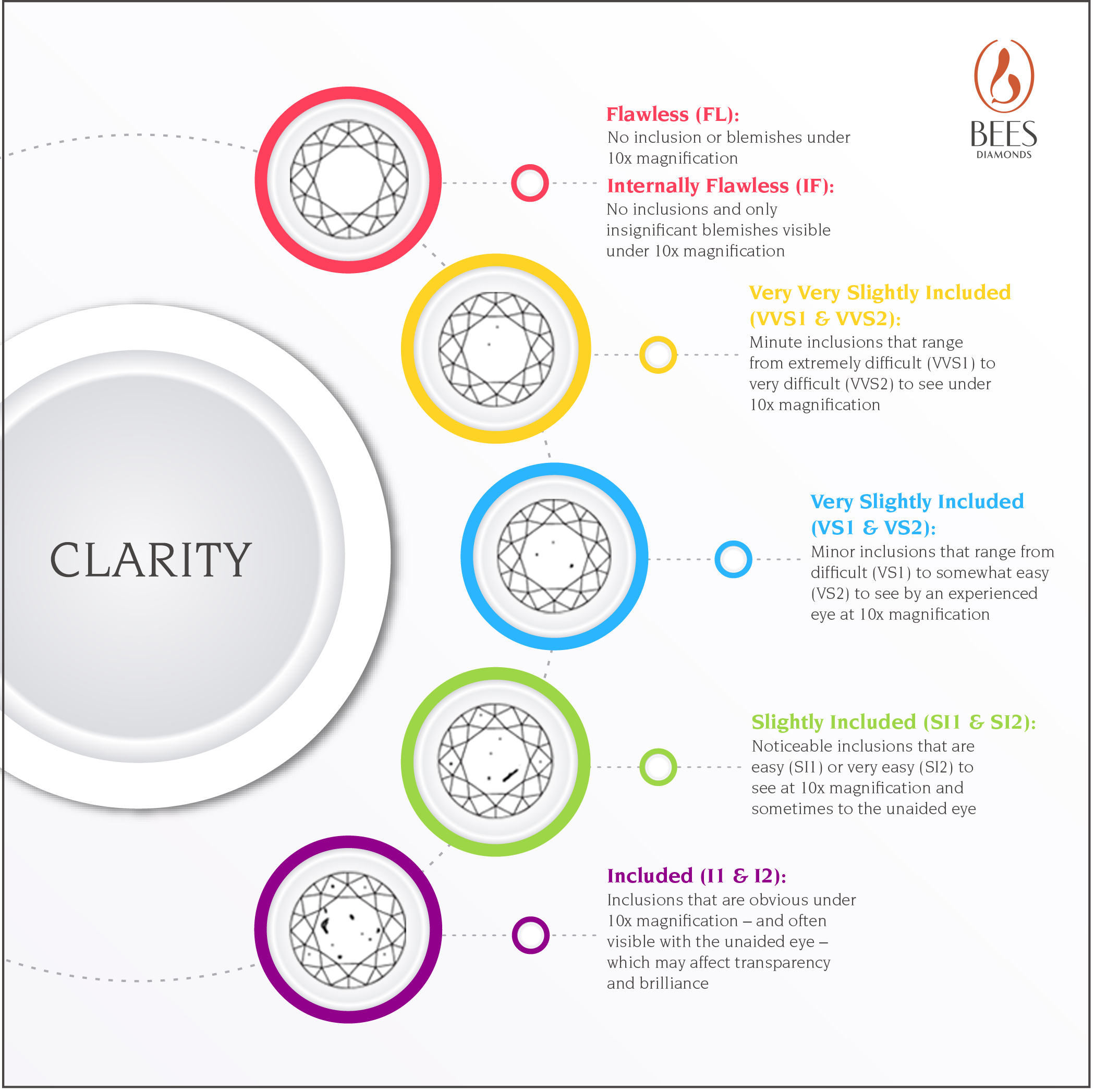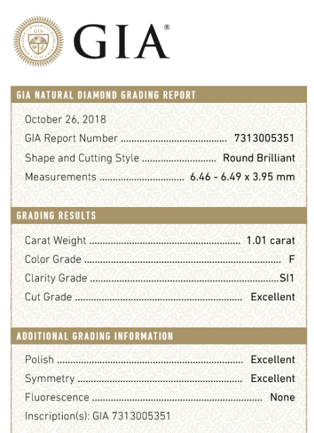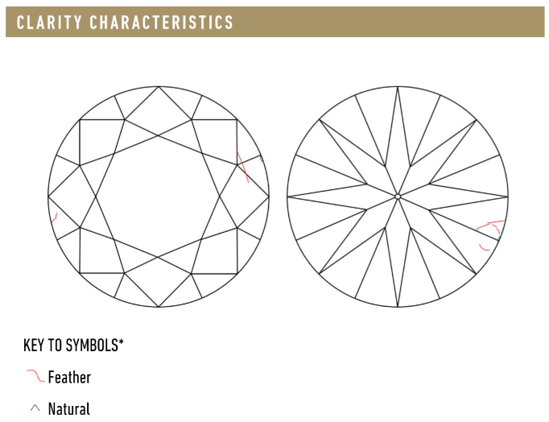What is Diamond Clarity?
What is Diamond Clarity?
As with all diamond jewellery, the value of the stone will always be a concern and so it should be! When investing in such high value items, we can only hope that they will become treasured time pieces with a worth that can outlast generations. This is why we strive for diamonds that withhold exceptional purity and clarity characteristics. Not only will this secure the rarity and investment value through time but it will be a worthy representation of the sentimental value and history it encompasses. A great legacy to pass down through the generations
Considered one of the most complicated facets of the 4’Cs, clarity can be intimidating. Don’t worry though! We’ve broken it down and explained it so that you can walk away with the knowledge to know exactly what clarity is and how it is graded.
What even is diamond clarity?
Most natural diamonds are flawed. These flaws can be small, large, black, white and located anywhere in the diamond. Diamond clarity is the relative absence of these imperfections.
How is diamond clarity graded?
The diamond grading lab with the highest authority is the GIA. Using 10x magnification, GIA gemmologists map all internal (Inclusions) and external (Blemishes) flaws of the diamond.
Based on their observations, a clarity grade will be awarded using the following scale:

 How to read a GIA report?
How to read a GIA report?
The GIA have two types of reports, including a diamond dossier for stones lower than 1.00 carat and a full report for those above. For any diamond with a diamond dossier, the inclusions will be limited to a worded description of the clarity characteristics.
For any diamond with the full report, you will find the clarity grade of the diamond listed on the left-hand side of the document under ‘grading results’.
There is also a section labelled ‘Clarity Characteristics’ where you will find all the different types and locations of the inclusions indicated on a 2D diagram of your diamond.
Labelled ‘Key to Symbols’, is a full list of all the inclusions that can be found within the diamond. Their corresponding location is plotted on the diamond diagram.
What the GIA Certificate will not tell you
The GIA certificate is essential in determining the investment value of the diamond and gives a great indication of the clarity of the stone however, it will never be a true indicator of the real-life appearance of the diamond. This is mainly because the plot is a 2D representation and doesn’t show the full extent of the inclusions in the diamond. Listed are some examples of how the GIA report can be different to the diamond:
- The GIA report does not show the depth and colour of inclusions represented. As a result, you will not be able to determine how the diamond actually looks. For example, a diagram with lots of white inclusions may turn out to look visually eye-clean whereas, a diamond with one black inclusion may look very obvious in real-life. 
- The GIA report will never reveal how an inclusion will be reflected through the facets of the diamond. For example, an inclusion at the side of the diamond but positioned at an angle may be reflected throughout the facets of the stone and reappear to be at its centre. The inclusion could also be reflected across different facets throughout the stone giving the illusion of multiple inclusions.
- The GIA report will also not document the full extent of any chips on the surface of the diamond. The chips will be indicated on the diagram however, no matter the length, depth or width, the symbol used to represent it will always be the same.
- Lastly, the GIA report will have a small section of the report dedicated to any additional comments. This documents any inclusions or pinpoints that are too small to be plotted on the diagram. Whilst they may be small their combined appearance could impact the appearance of the diamond hugely.
These un-reported characteristics of the diamond can be extremely detrimental to a diamond’s appearance and value. This is why you must always be extra careful when buying diamonds online as the GIA report can often be rather misleading.
If you would like to learn more about clarity and the different types of inclusions in a diamond, be sure to read our next post. There, we will explore the different types of inclusions and which of them are the worst for your diamond. We will also provide some inside tricks on how to hide inclusions!
Bee’s Diamonds hand-selects only 1 in every 1000 stones they examine due to their incredibly strict grading standards. This allows their diamonds to be classified as the top 5% within their respective grades. Get in contact with their professionals to learn more about the purity of their diamonds or to book a private consultation to see for yourself!
+(852) 2810 7810
Diamond Clarity Characteristics









